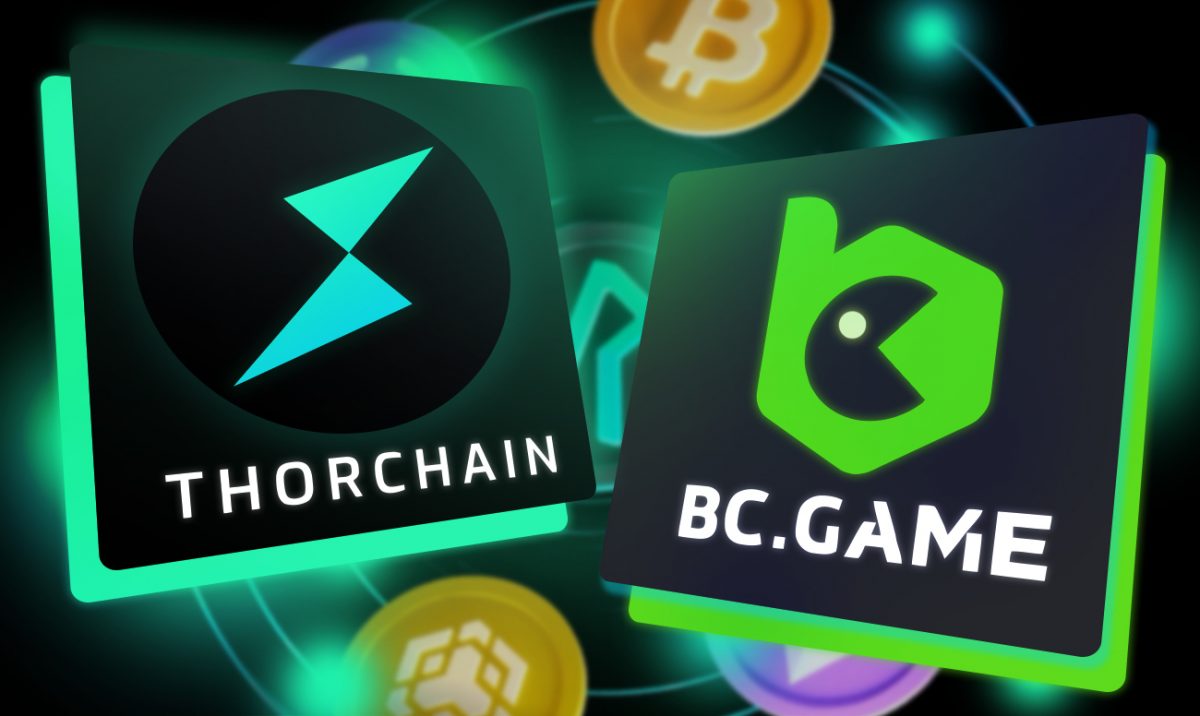The enterprise blockchain era continues to churn out hits. As far as interoperable blockchains go, ThorChain (RUNE) is one of the notable names with the RUNE token now listed on BC.Game.
This blockchain emerged just before the explosion of Decentralized Finance (DeFi) in 2020. DeFi has changed the face of blockchain innovation to go beyond rigid cryptocurrencies. Users can now access more services, including but not limited to lending, yield farming, data management solutions, and so much more. This sector promises to be the future of the blockchain, adding to the progress of early blockchains like Bitcoin.
What is ThorChain?
This platform is a decentralized liquidity protocol for users who can swap assets in a peer-to-peer network. ThorChain facilitates the exchange of layer-1 assets by providing secure and scalable cross-chain settlement. The protocol utilizes the Tendermint Consensus from Cosmos to achieve great finality.
In 2018, the team behind Thorchain conceptualized the protocol during the Binance Dexathon, which is a coding competition. The core functions of this protocol are to offer cross-chain liquidity, which reduces the need for centralized exchanges in the DeFi space. Decentralized exchanges still have significant inefficiencies, especially regarding liquidity in multiple assets. Users can achieve fast cross-chain swaps and earn a yield on staked assets.
An anonymous team founded Thorchain to ensure the decentralized nature of the protocol. Notably, Bitcoin’s founder has also maintained anonymity since its launch. All development activity is on GitHub, where new updates and upgrades happen. The development team relies on nodes, which rely on stakers to secure the network.
What Makes THORChain Unique?
Thorchain’s practical approach to liquidity sets it apart from other blockchain platforms. It has a special fee to prevent slippage and loss of liquidity. The protocol also has a user-friendly interface, allowing the seamless exchange of crypto.
The non-profit organization does not keep RUNE funds used for fees, which instead go to network participants. Users can exchange tokens from top platforms like Ethereum, which gives the blockchain remarkable cross-chain utility. Maintaining healthy liquidity and allowing cross-chain swaps replicates the function of centralized exchanges, which currently dominate the trading scene.
Therefore, ThorChain works as a leaderless asset vault. This quality is essential to give a genuinely decentralized face, which many other platforms cannot boast. Tendermint also ensures that the platform requires a two-thirds majority consensus for funds to enter or exit the primary vault. These security arrangements ensure the platform is highly secure, a vital trait in the blockchain scene.
Swappers rely on liquidity pools for their exchange activity. These pools exist because of liquidity providers who have the incentive of rewards. The node operators help secure the ecosystem. Such infrastructure ensures that all participants in the network have an incentive to keep using the protocol.
No Wrapping Of Assets And Use Of Arbitrage Traders
Notably, ThorChain doesn’t wrap assets before swapping. Users swap native assets throughout and have the assurance of transparency and autonomy. The protocol is noncustodial for liquidity providers, meaning that only original depositors can withdraw their assets for the liquidity pool. Swaps function by allowing swappers to send their assets to ThorChain and receive another asset. Therefore, there is a token to RUNE swap in either direction for each swap.
The node operators are independent and receive part of the fee for swaps. Operators must provide a bond of RUNE, held as collateral, to ensure that these operators always operate in good faith. A bond must be twice as big as RUNE pooled for the node.
Notably, the protocol also utilizes arbitrage traders to regulate prices. They keep monitoring and rebalancing pools to ensure stability in asset swaps. The traders look for mispriced assets and make profits for trades. This arrangement regulates prices naturally, removing the need for oracles and similar mechanisms. Thorchain operates as a vault manager, ensuring that swaps do not affect the liquidity’s overall stability, eliminating the need for centralized intermediaries.
RUNE token
The name of this protocol took inspiration from Nordic mythology. Similarly, RUNE is the name of an ancient Germanic writing system. This native token is vital to the exchange functions of the network. Users utilize it as a base pair to swap RUNE for other supported assets. The other core functions of the token are security, governance, and incentives.
In the liquidity pools, RUNE facilitates swaps between pools. Accordingly, pool operators must maintain a ratio of 1:1 for every pool. It also ensures that token holders can vote on decisions like the priority assets for the chain and other decisions affecting the protocol.
Additionally, the token helps reward liquidity providers. Since the token facilitates transaction fees, it serves the valuable purpose of rewarding those who keep the network secure and liquid.
Notably, RUNE is divisible with the smallest denomination called a Tor. This model aims to ensure that RUNE can scale up effectively to a time of widespread usage and offer global swap services to tens of millions.
RUNE listed on BC.Game
Success happens when opportunity meets preparation. RUNE is preparing for a long-term game where it can prove a decisive player in the cryptocurrency exchange space. It offers all the advantages of a centralized exchange but provides additional anonymity to users who are wary of the significant disclosure requirements. Additionally, the opportunities for liquidity providers and node operators ensure those network participants have meaningful rewards and gain a vested interest in ensuring the protocol succeeds.
For the reasons above, BC.Game has listed RUNE as one of the tokens crypto gambling enthusiasts can wager using. This project has the hallmarks of a robust and significant project for the foreseeable future.














